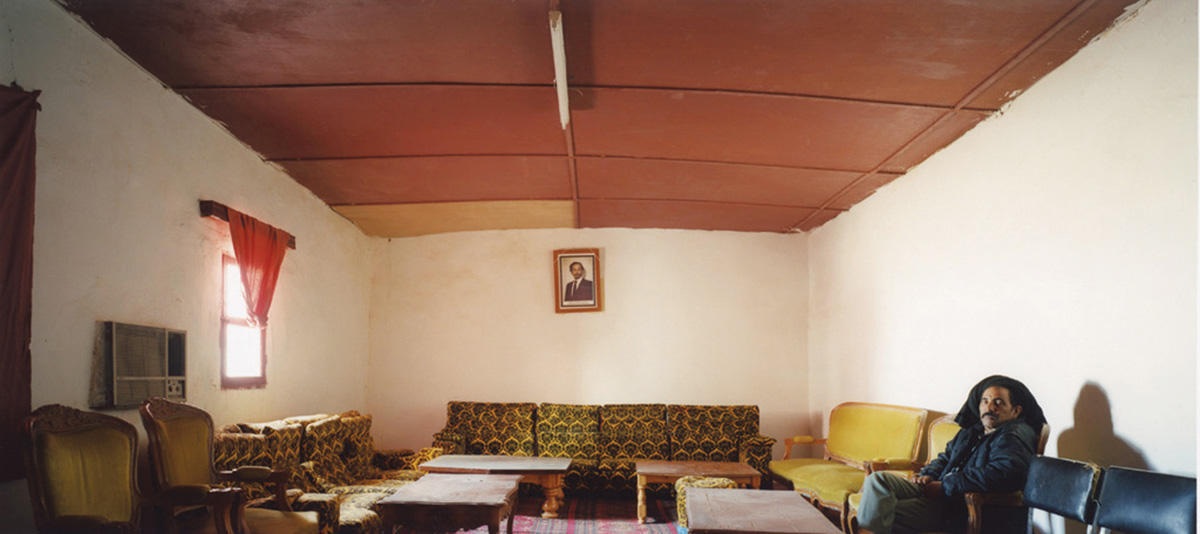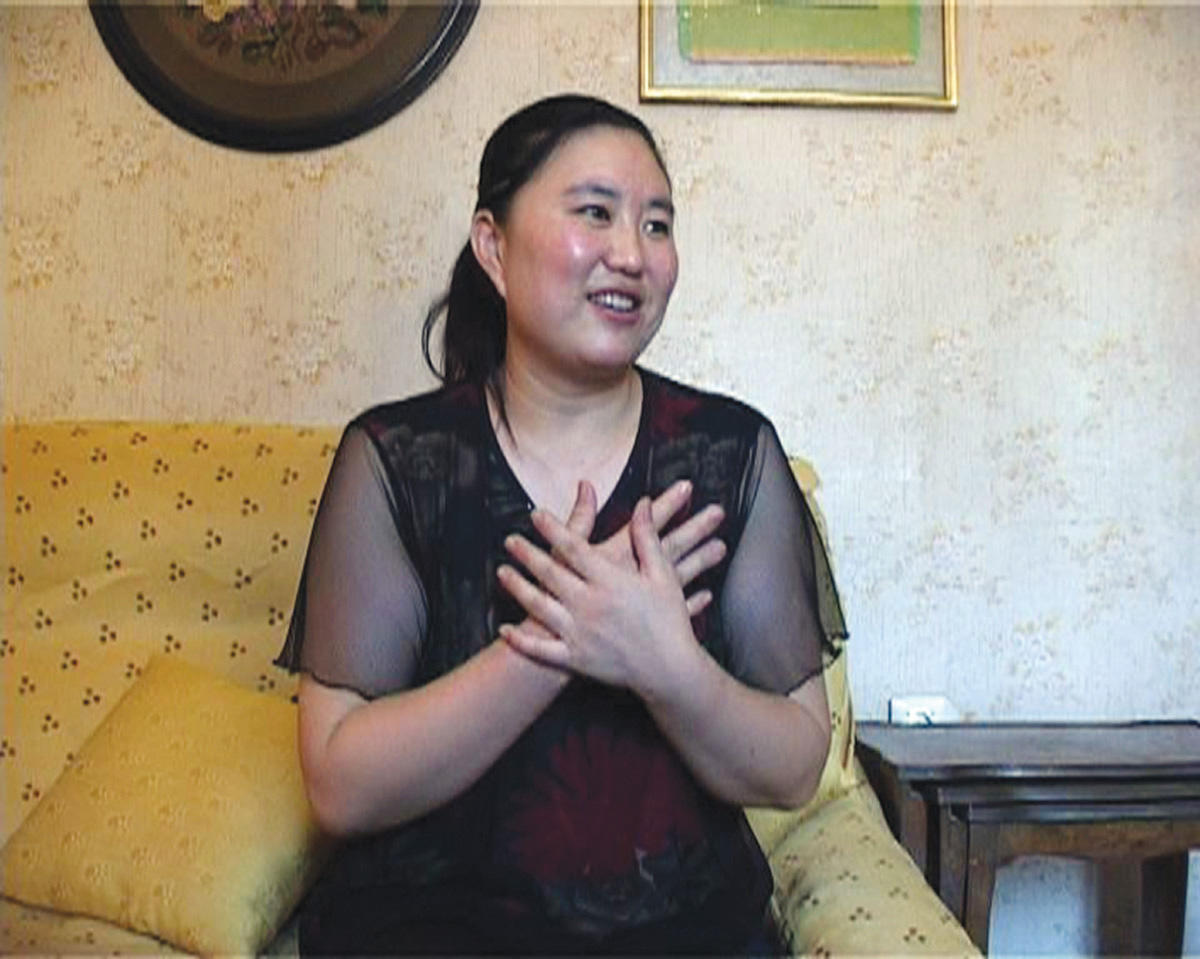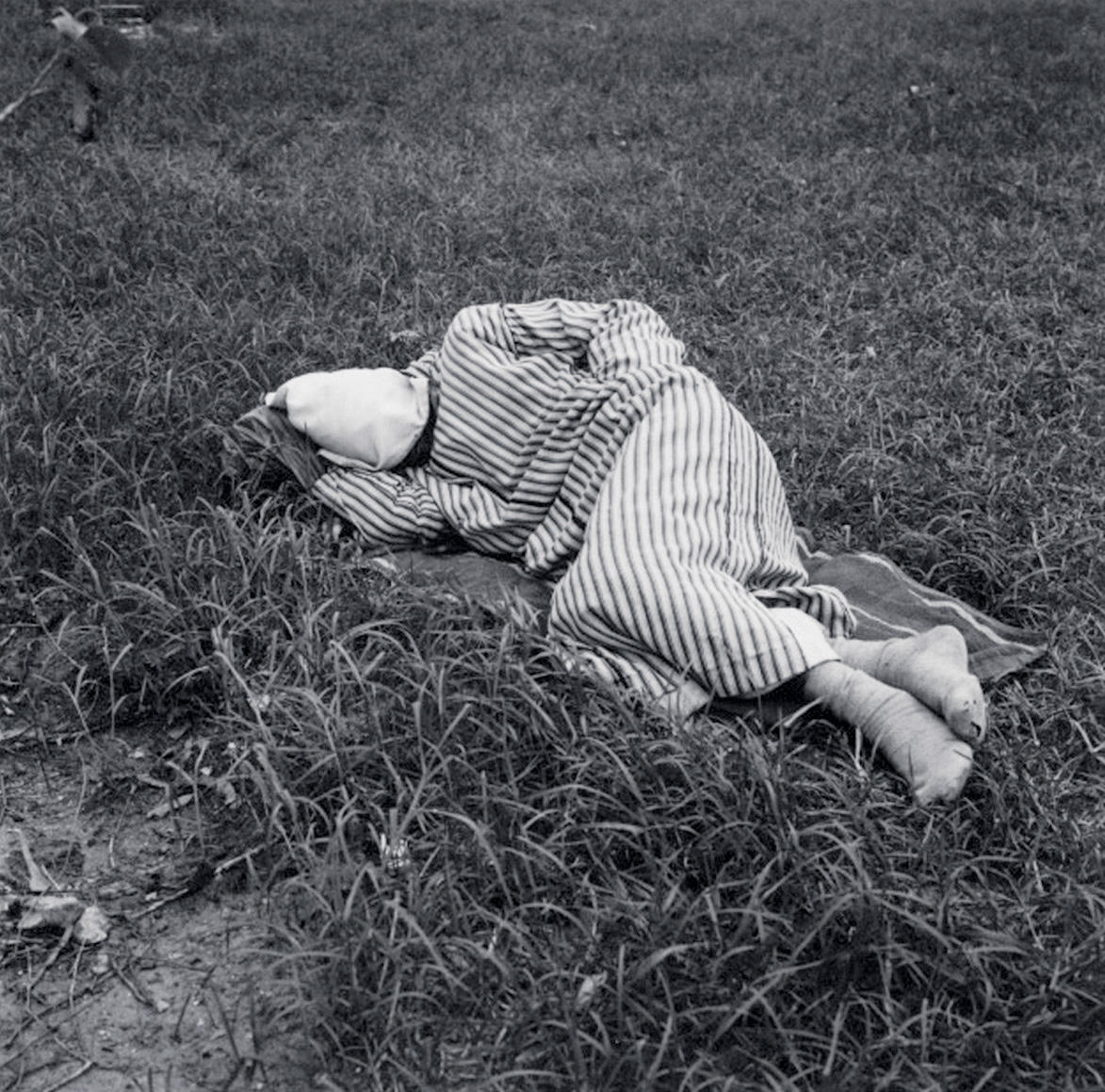
Cairo
The Maghreb Connection
Townhouse Gallery of Contemporary Art
December 11, 2006–January 13, 2007
Although camera crews were on hand, none of the protagonists bothered to show up. At the opening of The Maghreb Connection at the Townhouse Gallery in Cairo, only the usual suspects appeared: the curator, who was interviewed by Orbit TV; the artists, who received congratulations on all sides; and the expats, French-speaking Egyptians and art students who always turn out for Townhouse’s events, happy for an evening’s entertainment. But of the artworks’ subjects — immigrants from sub-Saharan Africa, the Maghreb, China, and elsewhere — not one was present.
That the show purported to address such weighty and topical issues as migration and xenophobia — and, in the words of the curators, address the question, “What do the migrants themselves have to say about their own mobility, and how can their voices become part of a solution to what so many others have constructed as a problem?” — made the absence of such voices in the evening’s cacophony all the more audible.
The Maghreb Connection, like most art shows that claim to be political, had grand and noble aspirations. Conceiving of itself as a collaborative, borderless, and ongoing examination of networks of mobility and migration, it brought together researchers, artists, students, and activists over the course of eighteen months, culminating in the eight-work exhibit, which will travel to the Center for Contemporary Art in Geneva; the accompanying catalogue; and a symposium, which took place December 11, 2006.
In its Townhouse manifestation, the show looked promising. Gritty videos filmed in places few news cameras make it to were being shown in Townhouse’s exhibition hall; large-scale posters using images taken by the Moroccan coast guard filled a wall; and the Annex and the main space housed screening rooms and giant photographs by Yto Barrada and Armin Linke. Ostensibly this offered eight a radically different approaches to this highly charged subject.

Closer examination revealed technical difficulties: small TV monitors attempting to communicate Ursula Biemann’s short videos on big ideas with low-quality headphones just couldn’t hack it. And there were other difficulties as well. While the show claimed repeatedly, both in the catalogue and throughout the symposium, to bring a polyphonic and conceptually wider point of view — that of the artist, the researcher, the activist — to the discussion of migration, Biemann’s videos, and those of her assistant, Charles Heller, had the unpolished, realist look and feel of long-format TV news segments. Was this recreation of the medium against which the show so earnestly posited itself intentional? If so, its recontextualization in a gallery, propped up by theoretical sound bites about inscribing power on bodies, failed to distinguish them.
Both Biemann and Heller did the voiceover for their videos, positioning themselves as omniscient narrators who provide crucial background information, be it historical or personal, as when Heller describes his disappointment at not reaching the Bel Younech refugee camp. They also offer, didactically and without subtlety, their own theories on migration, power, and autonomy, substituting their voices for those of their subjects. To show gritty migrant life while whispering foregone conclusions does little to widen context or provoke debate.
Hala Elkoussy aimed higher in her animated video From Rome to Rome. The title refers to the Sharkia governorate of Egypt, where so many of the towns have lost their young men to Italy that many now go by the name of the destination. Pooling stories collected from the newspapers, internet research, and interviews with both educated Cairenes and less privileged men from the “Italian” countryside, Elkoussy’s video tells the tale of Younis, who, with a band of fellow fortune-seekers, crosses Libya and the Mediterranean, arriving at the Italian island of Lampedusa, where they are promptly tossed into jail. By hiring a children’s book author and illustrator, the abundantly talented Walid Taher, Elkoussy channeled the power of cartoons, inviting us to enter a dreamy, otherworldly place. In this state, heightened by the narrator’s gently theatrical tone and the naiveté of his statements, the viewer is carried along almost unthinkingly through the story, frame by tragic frame.
Chinese Sweet, Chinese Pretty, a video by the Cairo-based artist Doa Aly, focused on the small but growing Chinese community in Cairo. (It’s currently 3000 strong.) Aly started the project after two women calling themselves Susu and Mama knocked on her door one day, offered her some “highly flammable nightgowns,” as she calls them, and then disappeared when she didn’t want to buy any. Determined to learn more, she hired a translator and was trailing some other vendors when, a year after the first encounter, she bumped into Susu and Mama again. Featuring them in their various roles — as mothers, daughters, wives, vendors, and lingerie models — the video is slick and well-edited, with catchy Chinese pop tunes piped in at all the right moments and a fine balance of long shots, depicting Cairo’s mean streets, and intimate at-home moments with the women.

At-home moments aside, the video has trouble establishing a relationship between subjects and viewers, due in part to linguistic barriers (since the subjects speak only Chinese, all of their statements were relayed through an Arabic-speaking translator and later subtitled in English and Arabic), but largely because the artist herself felt, also for linguistic reasons, that she never succeeded, over seven intense months of filming, in establishing a relationship with her subjects. One senses this when watching, and it emerges as an observational and informational work —despite its linguistic issues, it’s an engaging and fast-moving anthropological study wrought in video.
Perhaps it is no coincidence that the two best-received pieces in the show, From Rome to Rome and Chinese Sweet, Chinese Pretty, were homespun (and had their own projection rooms with decent sound). Given Townhouse’s location and its relationship with the local community (it runs outreach programs with Sudanese refugees and weekly free art workshops), the show had a particular resonance with its audience. In its Geneva incarnation, with the works ever further from their subjects and their sites of creation, it remains to be seen whether the voices of these unheard people will manage to echo.